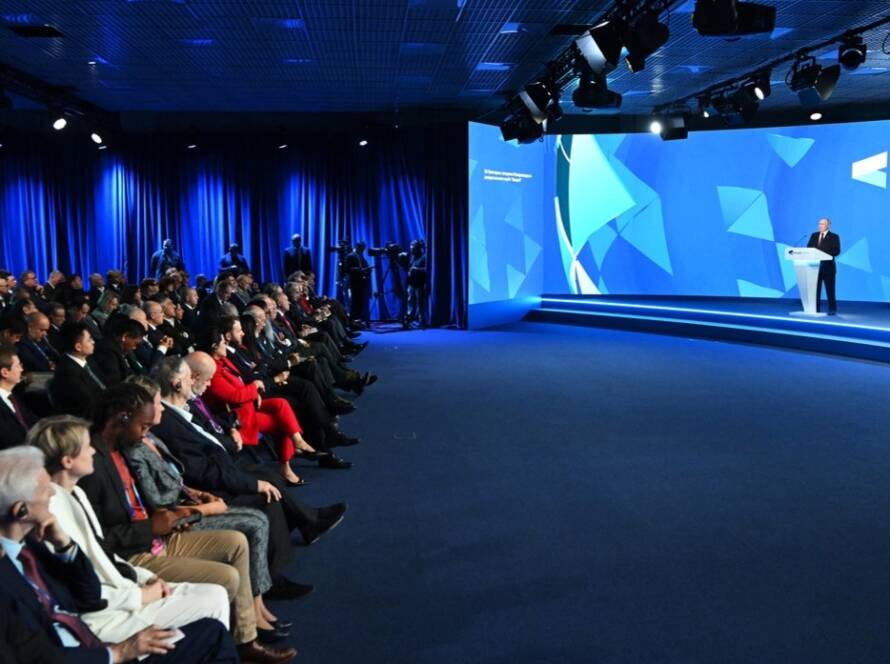By Dr M. Ganeshamoorthy

Facing its worst crisis since independence, Sri Lanka’s economy has only just begun to experience the repercussions of imprudent policymaking. The government’s announcement of the preemptive unilateral default of $51 billion announced last week has sent the country’s credit ratings catapulting. The closure of the stock exchange for five working days from 18 April has added to worries but the International Monetary Fund (IMF)-Sri Lanka talks which will commence on the same day could be the first step in the island’s painful path to recovery. How should Sri Lanka brace for impact?
Usually debt defaults are done after negotiations with creditors but the unilateral nature of Sri Lanka’s default has impacted future creditor confidence and negatively impacted foreign exchange inflows to the country. The Security Exchange Commission also ordered the Colombo Stock Exchange shut for 5 working days commencing 18 March citing that investors can make ‘’informed decisions’’ on their portfolio circumventing market undercurrents. However, the Ceylon Chamber of Commerce (CCC) has questioned the move given the existing circuit breakers which can withstand organic market rate rises and plunges and noted there is no need for a preemptive 5-day closure. They CCC also noted that the move works to the disadvantage of potential investors or sellers who cannot buy or sell stocks at the current share prices.
In Washington on 18 April, the IMF will ask the Sri Lankan delegation headed by finance minister Ali Sabry for a credible repayment plan. The government must be able to convince the IMF that it has a roadmap to resolve the ongoing political and economic instability. This will reinstate migrant worker confidence and reignite remittance flows and helps tourism revival which is dependent on political stability – both key foreign exchange earners for Sri Lanka. The IMF is likely to ask Sri Lanka to remove price controls and allow market forces to determine food and energy prices. This will cause cost-push inflation and result in higher prices of all goods and services across the board exacerbating the worst-hit citizenry of the crisis. Hence a social safety net to mitigate the blow on Sri Lanka’s lowest earners will be a crucial factor. IMF disbursements usually are a 3-6 month affair but given Sri Lanka’s emergency and how the delegation performs, there is potential for bridge funding which can expedite disbursement.
Minister Ali Sabry says Sri Lanka needs 4 billion dollar external financial injections. India has reportedly pledged additional 2 billion dollar assistance putting its full relief package to Sri Lanka at a whopping near five billion dollars. The Minister also confirmed that talks are in progress with China to secure similar relief. Sri Lanka must look for bilateral interventions such as those pursued with India and China with other nations in addition to the potential IMF assistance.
This crisis was manmade through and through. In 2018 the country’s foreign reserves stood at USD 6.9 billion. These have been falling drastically since, owing to debt servicing.
Complicating the situation further, Sri Lanka had gone on a sovereign bond binge since at least 2007, an obligation that is set to cost the economy roughly USD 6 billion per annum until 2026. This has contributed massively to the crisis today.
This is not to say that the crisis wasn’t foreseeable. It was. Experts kept pointing out the obvious, yet they continued to be sidelined. Had their advice been heeded, had the measures they recommended been implemented, the economy would not have been impacted this way. Instead several ill-conceived decisions, such as the chemical fertilizer ban, led to massive depletions in the country’s economic potential. Meanwhile, industry after industry continues to be crippled by power outages and fuel shortages, contributing to economic contraction and a possible economic recession.
Fuel ships come and go, and payments to many of them are yet to be settled. In a context where every dollar needs to be managed carefully, we are facing the worst of both worlds: an inability to pay for fuel and other essential imports, resulting in the country being forced to settle demurrage costs and other fines for late or non-payments.
All this is not to say that the crisis has been entirely manmade. Natural disasters, health emergencies, and international conflicts have contributed their share to the situation in the country. COVID-19 has of course had a devastating impact on the economy, reducing the country’s potential for recovery drastically.
While remittances and commodity exports, two of Sri Lanka’s income sources, depleted, tourism was somewhat on its way up in January 2022. Yet whatever benefits of an uptick in tourist numbers dissipated, thanks to the Russia-Ukraine War. On the one hand, Russian and Ukrainian tourists made up a significant portion of the tourism sector; on the other, the War escalated fuel prices, putting additional pressure on forex reserves.
These have had knock-on effects on other indicators. While nowhere near the inflation rates of other crisis-ridden countries like Argentina, Zimbabwe, and Lebanon, food inflation rose to as much as 30 percent in March. The depreciating rupee has impacted inflation as well, particularly through imports. The cost of living for the common man has risen by leaps and bounds, putting a strain on everything, making life utterly unbearable.
It is inflation, coupled with intermittent power cuts and fuel shortages that have fuelled mass agitation in the country today. These protests and demonstrations are seen, rightly, to be carried out by a majority in the country. It is interesting to note that agitation of this sort was not present even in the last few years of the 30 year separatist conflict.
Sri Lanka’s post-war development trajectory has been a mixed bag, and it has shaped the course of these protests. While going on an investment and infrastructure binge, especially with the construction of establishments like the Mattala Airport and Magampura Port in Hambantota, as well as the Nelum Kuluna or Lotus Tower in Colombo, along with revenue generating highways across the island, the government took out massive loans that have contributed to a forever spiraling debt crisis. Borrowings from domestic sources, moreover, round up to 60 percent of total borrowings, compared to foreign debt figures.
The problem can be traced to Sri Lanka being upgraded from a low income to a middle income country. This put a strain on its borrowing capacity, forcing it to engage with bilateral lenders rather than multilateral development agencies. That has led Sri Lanka to rely almost solely on commercial borrowings, a boomerang that has swayed back and hit the country today. At present, Sri Lanka finds it difficult to auction ISBs, given how much it has already borrowed and how much it is yet to settle and repay. ISBs need to be settled in a short time-frame, and the government’s inability to do so has resulted in the Ministry of Finance officially declaring the country debt-ridden and bankrupt.
Of course, Sri Lanka has always had the option of going to institutions such as the IMF and the World Bank. Yet the conditionalities that are often imposed by these agencies have deterred successive regimes from tapping into them. Fear of conditionalities has no doubt kept the government away from engaging with these institutions, and it is what explains its reluctance to hold discussions with them until the 11th hour last week.
Nevertheless, several university academics and economists, including former Central Bank officials, sounded the alarm over the last two years, warning the government of the acute problems the country would have to face if it didn’t go to the IMF or didn’t come up with a feasible alternative plan. They emphasized the gravity of the situation by pointing out that if IMF assistance was delayed, its conditionalities would become more severe.
For their part, government officials, including none less than the Governor of the Central Bank, downplayed these warnings, assuring locals and foreigners that the country could manage through tourist arrivals and foreign remittances. When expected cash flows did not materialize, fuel shortages and power cuts were the most immediate outcomes. These are what forced protesters on to the streets, and they are what compelled the government to reshuffle the Cabinet and appoint a fresh face to the Central Bank.
Owing to these developments, IMF assistance now seems a highly likely prospect. Yet the future seems more uncertain than ever. Recovery will be a long and overdrawn process, a process helped by global post-COVID recovery, but one constrained by the murky waters the government has had to sail around, given the political crisis it has unleashed vis-à-vis island wide demonstrations. Nevertheless, with the appointment of three individuals – ex-Central Bank Governor Indrajith Coomaraswamy, ex-World Bank staffer Shantha Devaranjan, and ex-IMF staffer Sharmini Cooray, one can expect to see a silver lining in the days and months to come, though negotiations will certainly not be a quick affair.
The IMF has, in the meantime, through its Article IV Consultation arm, commented on what Sri Lanka needs to do to get itself out of the present mess. In particular, it recommends increasing the government’s revenue generation while reducing its expenditures. These will most probably be carried out by reducing State support to loss-making SOEs. Such measures will not be popular in the short-term, while cuts to subsidies and other welfare schemes will impact the poorest, putting an even bigger strain on the government. On the other hand, the IMF has cautioned against across-the-board welfare cuts, noting that the government needs to protect the most vulnerable groups through a social safety net.
Sri Lanka is in the process of dusting itself from a massive economic turmoil. Faced with a long journey ahead, it can look to the past, to other countries that went through similar crises, and emerged stronger. It can learn from its immediate neighbor, India.
With surging unemployment, depleting foreign reserves, and skyrocketing prices, India in 1991 faced an outpouring of protests and demonstrations not dissimilar to the protests we are seeing here today. To put it in perspective, the entire country’s foreign reserves sufficed for no more than a fortnight’s imports.
It was against this backdrop that Prime Minister Narasingha Rao appointed a respected and eminent economist, Dr Manmohan Singh, as the country’s Finance Minister. The measures he took, including going to the IMF and adhering to its conditionalities, enabled him and his government to stabilize the economy in the long term. His proposals included reforms on all fronts, including tax, foreign exchange, trade, and investment policy.
Sri Lanka’s current plight calls for similar prescriptions. These can only be implemented, and managed, by appointing capable individuals and experts to high positions. To do this, the Sri Lankan government will first have to defuse the political crisis it has unleashed, through its own doing and undoing. Without resolving this, there can be no road ahead.
At present, the IMF line seems to be the only credible way out. The truth of the matter is that no other option, such as tourist arrivals or remittances, can aid us out of the mess we are caught in, owing mainly to the political stalemate the country is caught in.
The writer is a Senior Lecturer of Economics at the Department of Economics at the University of Colombo.
******
Factum is an Asia-focused think tank on International Relations, Tech Cooperation and Strategic Communications based in Sri Lanka accessible via www.factum.lk


